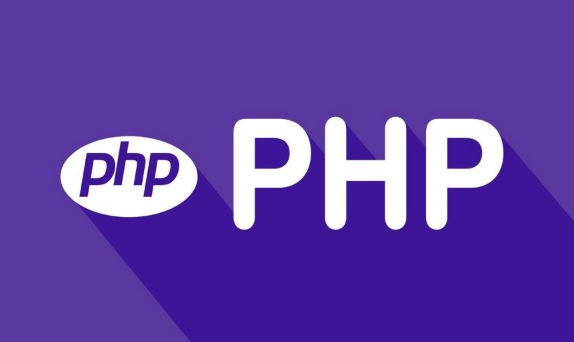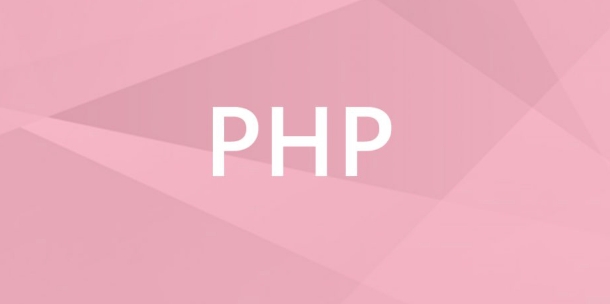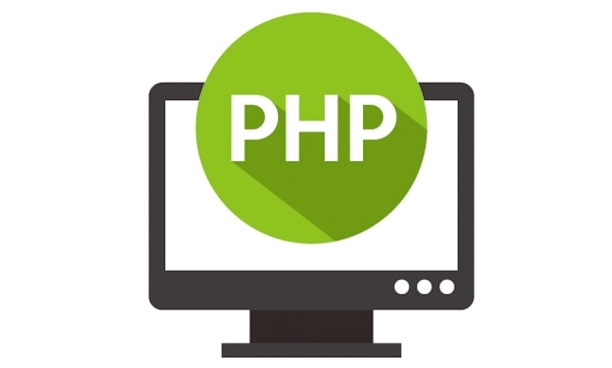Setting up the PHP environment starts by choosing a development kit, and using integrated tools such as XAMPP, MAMP or WAMP is suitable for beginners; 1. Select a suitable development stack, such as XAMPP is suitable for cross-platform novices, MAMP is suitable for macOS users, and manual installation is suitable for those who need to customize the environment; 2. Install PHP and related components, and install Apache, MySQL and PHP through one-click installation package or Linux command line; 3. Configure php.ini to adjust error reports, upload restrictions and time zones, etc.; 4. Optionally configure virtual hosts to achieve multi-site operation, and bind local domain names by modifying configuration files and hosts files; 5. Use tools such as Docker, Vagrant or Laravel Sail to improve the efficiency of environment management, especially suitable for complex projects and team collaboration.

Setting up a PHP environment from scratch might seem daunting if you're new to web development, but once you understand the components involved and how they interact, it becomes a straightforward process. The key is knowing what tools you need, how to install them properly, and how to configure them for your specific needs.

1. Choosing Your Development Stack
Before diving into installation steps, it's important to decide on the stack that best suits your needs. Most PHP developers use LAMP (Linux, Apache, MySQL, PHP) or WAMP (Windows version), MAMP (macOS), or XAMPP , which works across platforms.

- XAMPP is great for beginners because it bundles everything in one installer.
- If you're on macOS, MAMP gives a user-friendly GUI.
- For more control and customization, installing each component separately might be better — especially if you're aiming for production-like environments.
Choose based on your comfort level and long-term goals.
2. Installing PHP and Required Components
If you're going with a stack like XAMPP:

- Download the latest version from the official site.
- Run the installer and follow the prompts.
- Choose the components you want (Apache, MySQL, PHP, etc.) — stick with defaults unless you have specific needs.
For manual installation (on Linux, for example):
sudo apt update sudo apt install apache2 sudo apt install mysql-server sudo apt install php php-cli php-mysql
After installation, test your setup by creating a simple info.php file in your web root ( /var/www/html or htdocs in XAMPP):
<?php phpinfo(); ?>
Access this file via http://localhost/info.php in your browser. If it shows PHP configuration details, you're good to go.
3. Configuring PHP Settings
The main configuration file is php.ini . Its location varies depending on your system and installation method.
Common settings to adjust:
- error_reporting : Set to
E_ALLduring development to catch issues early. - display_errors : Enable this locally so errors show up in the browser.
- upload_max_filesize and post_max_size : Adjust these if you plan to upload large files.
- date.timezone : Set your timezone to avoid warnings.
You can find the active php.ini path from the phpinfo() output page.
Once configured, restart Apache or your server software for changes to take effect.
4. Setting Up Virtual Hosts (Optional but Useful)
Virtual hosts allow you to run multiple websites on the same machine, each with its own domain or subdomain.
To set this up in Apache:
Go to
httpd-vhosts.conf(usually inside the Apache config folder).Add a block like this:
<VirtualHost *:80> ServerName mysite.local DocumentRoot "/path/to/your/project" <Directory "/path/to/your/project"> Options Indexes FollowSymLinks AllowOverride All Require all granted </Directory> </VirtualHost>Edit your
hostsfile (C:\Windows\System32\drivers\etc\hostson Windows,/etc/hostson Unix) and add:127.0.0.1 mysite.local
Now you can access your project via
http://mysite.local.
5. Using Tools to Simplify Environment Management
Tools like Docker , Vagrant , and Laravel Homestead are worth considering as you grow more comfortable.
- Docker lets you containerize your entire app environment, making it portable and consistent.
- Vagrant automates virtual machine setup, ideal for team collaboration.
- If you're using Laravel, Sail provides a lightweight way to manage everything through Docker without deep knowledge of it.
These aren't required at first, but they become invaluable when working on complex or team-based projects.
That's basically it. Once everything is installed and configured, you'll be ready to start building PHP applications. It's not complicated, but there are enough moving parts that it's easy to overlook something small — like file permissions or missing extensions — so always double-check your logs and error outputs if things don't work as expected.
The above is the detailed content of PHP environment configuration: A complete guide from scratch. For more information, please follow other related articles on the PHP Chinese website!

Hot AI Tools

Undress AI Tool
Undress images for free

Undresser.AI Undress
AI-powered app for creating realistic nude photos

AI Clothes Remover
Online AI tool for removing clothes from photos.

Clothoff.io
AI clothes remover

Video Face Swap
Swap faces in any video effortlessly with our completely free AI face swap tool!

Hot Article

Hot Tools

Notepad++7.3.1
Easy-to-use and free code editor

SublimeText3 Chinese version
Chinese version, very easy to use

Zend Studio 13.0.1
Powerful PHP integrated development environment

Dreamweaver CS6
Visual web development tools

SublimeText3 Mac version
God-level code editing software (SublimeText3)
 PHP Variable Scope Explained
Jul 17, 2025 am 04:16 AM
PHP Variable Scope Explained
Jul 17, 2025 am 04:16 AM
Common problems and solutions for PHP variable scope include: 1. The global variable cannot be accessed within the function, and it needs to be passed in using the global keyword or parameter; 2. The static variable is declared with static, and it is only initialized once and the value is maintained between multiple calls; 3. Hyperglobal variables such as $_GET and $_POST can be used directly in any scope, but you need to pay attention to safe filtering; 4. Anonymous functions need to introduce parent scope variables through the use keyword, and when modifying external variables, you need to pass a reference. Mastering these rules can help avoid errors and improve code stability.
 How to handle File Uploads securely in PHP?
Jul 08, 2025 am 02:37 AM
How to handle File Uploads securely in PHP?
Jul 08, 2025 am 02:37 AM
To safely handle PHP file uploads, you need to verify the source and type, control the file name and path, set server restrictions, and process media files twice. 1. Verify the upload source to prevent CSRF through token and detect the real MIME type through finfo_file using whitelist control; 2. Rename the file to a random string and determine the extension to store it in a non-Web directory according to the detection type; 3. PHP configuration limits the upload size and temporary directory Nginx/Apache prohibits access to the upload directory; 4. The GD library resaves the pictures to clear potential malicious data.
 Commenting Out Code in PHP
Jul 18, 2025 am 04:57 AM
Commenting Out Code in PHP
Jul 18, 2025 am 04:57 AM
There are three common methods for PHP comment code: 1. Use // or # to block one line of code, and it is recommended to use //; 2. Use /.../ to wrap code blocks with multiple lines, which cannot be nested but can be crossed; 3. Combination skills comments such as using /if(){}/ to control logic blocks, or to improve efficiency with editor shortcut keys, you should pay attention to closing symbols and avoid nesting when using them.
 How Do Generators Work in PHP?
Jul 11, 2025 am 03:12 AM
How Do Generators Work in PHP?
Jul 11, 2025 am 03:12 AM
AgeneratorinPHPisamemory-efficientwaytoiterateoverlargedatasetsbyyieldingvaluesoneatatimeinsteadofreturningthemallatonce.1.Generatorsusetheyieldkeywordtoproducevaluesondemand,reducingmemoryusage.2.Theyareusefulforhandlingbigloops,readinglargefiles,or
 Tips for Writing PHP Comments
Jul 18, 2025 am 04:51 AM
Tips for Writing PHP Comments
Jul 18, 2025 am 04:51 AM
The key to writing PHP comments is to clarify the purpose and specifications. Comments should explain "why" rather than "what was done", avoiding redundancy or too simplicity. 1. Use a unified format, such as docblock (/*/) for class and method descriptions to improve readability and tool compatibility; 2. Emphasize the reasons behind the logic, such as why JS jumps need to be output manually; 3. Add an overview description before complex code, describe the process in steps, and help understand the overall idea; 4. Use TODO and FIXME rationally to mark to-do items and problems to facilitate subsequent tracking and collaboration. Good annotations can reduce communication costs and improve code maintenance efficiency.
 Learning PHP: A Beginner's Guide
Jul 18, 2025 am 04:54 AM
Learning PHP: A Beginner's Guide
Jul 18, 2025 am 04:54 AM
TolearnPHPeffectively,startbysettingupalocalserverenvironmentusingtoolslikeXAMPPandacodeeditorlikeVSCode.1)InstallXAMPPforApache,MySQL,andPHP.2)Useacodeeditorforsyntaxsupport.3)TestyoursetupwithasimplePHPfile.Next,learnPHPbasicsincludingvariables,ech
 How to access a character in a string by index in PHP
Jul 12, 2025 am 03:15 AM
How to access a character in a string by index in PHP
Jul 12, 2025 am 03:15 AM
In PHP, you can use square brackets or curly braces to obtain string specific index characters, but square brackets are recommended; the index starts from 0, and the access outside the range returns a null value and cannot be assigned a value; mb_substr is required to handle multi-byte characters. For example: $str="hello";echo$str[0]; output h; and Chinese characters such as mb_substr($str,1,1) need to obtain the correct result; in actual applications, the length of the string should be checked before looping, dynamic strings need to be verified for validity, and multilingual projects recommend using multi-byte security functions uniformly.
 Quick PHP Installation Tutorial
Jul 18, 2025 am 04:52 AM
Quick PHP Installation Tutorial
Jul 18, 2025 am 04:52 AM
ToinstallPHPquickly,useXAMPPonWindowsorHomebrewonmacOS.1.OnWindows,downloadandinstallXAMPP,selectcomponents,startApache,andplacefilesinhtdocs.2.Alternatively,manuallyinstallPHPfromphp.netandsetupaserverlikeApache.3.OnmacOS,installHomebrew,thenrun'bre






